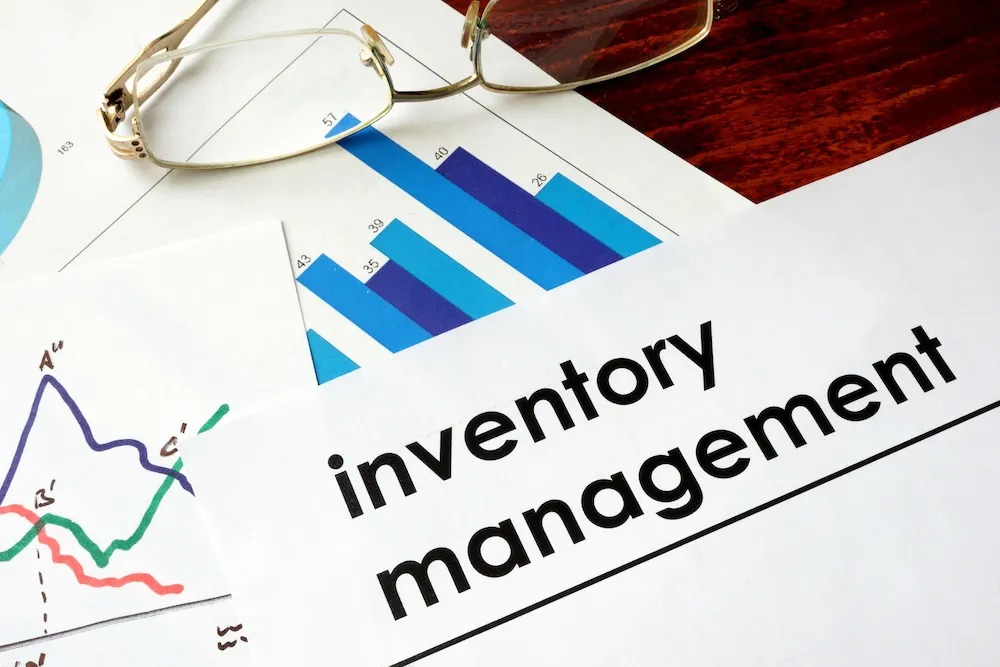What Is An Inventory Management System? A Complete Guide


When most people hear the word "inventory," they think of retail processes. They may have flashbacks to the days when they had to count inventory during their time at a teenage summer job.
While technically correct, this image is more narrow than the reality. Moreover, it leaves out a lot of information. Inventory has come a long way in the past few decades.
These days, several kinds of industries around the world have advanced their inventory management system solutions to reach new levels of efficiency. These systems help streamline the process for controlling your inventory's flow and maintenance.
This way, you can ensure that you have the amount of inventory you need for any time and of the best quality. If you think you could benefit from one of these systems, excellent! You can learn more about them by checking out our inventory management system guide below.
Defining Inventory Management System
We briefly defined this term above, but that definition leaves out a great deal of information. Here, we'll flesh out the term to give a more comprehensive understanding of how these systems work.
Inventory management systems combine hardware and software with other processes and procedures for one purpose. That purpose is to oversee the monitoring and maintaining of the products you keep in stock.
These "products" come in all sorts, whether company assets, raw materials or supplies, or final products that you can sell to customers. The best inventory management system includes each of the following features:
- Systems for identifying every product in inventory and its correlating information, like barcode labels
- Hardware resources for reading barcode labels
- Software that provides a centralized database and reference point for your inventory
- Means for data analysis, report generation, future demand forecasting, etc.
- Processes and policies for labels, documentation, and reports
- Workers trained to obey these rules and processes
Inventory Management System Benefits
As you can see, inventory management systems are comprehensive tools for managing your stock. However, they may also seem complicated. As such, you may wonder what concrete benefits these systems can offer your company.
Perhaps the best benefit of an inventory management system is the stability it brings. Without a thorough process regulating your stock, it can quickly fall into disarray. By utilizing these systems, your company can maintain a centralized record of each asset in its control.
This centralization gives you one source from which to find your item location, vendor information, and the amount in stock. If you're like most industries, your supply constantly changes. With these systems, you can automatically track your supply without a significant margin of error.
This information also helps your company gather data that could help business. By constantly monitoring your stock, you can see which items remain in high demand or stay slow-moving. You can then make decisions based on that information about how to invest your resources.
Because of this, it shouldn't surprise you that these systems provide several other advantages. Among these advantages are the following:
- Cash flow improvement
- Improved reporting and forecasting
- Reduced overhead storage costs
- Reduced labor costs
- Reduced deadstock
- Increased organization
Inventory Management System Tips
To get the most from your inventory system, you must set it up with some essential information. In doing so, you can help the system to operate at higher levels of efficiency.
Location Verification
So, what are some of the essentials a system needs? First, you have to ensure your system utilizes location names. If your business has several locations and warehouses in the state or country, you need to know which locations have stock.
Otherwise, things become cluttered and chaotic. Easily read location labels are essential as well. When your product moves from one location to another, you need a label that indicates which place it arrived from.
Numbering Systems
Another crucial component is an item identification numbering system unique to your company. These codes allow you to keep a consistent, easy-to-track record of which item is which. It helps prevent orders from getting mixed up as well as making your inventory easier to manage.
With that numbering system comes the starting count. Before assigning numbers to anything, you must first determine how many total assets you have in stock. From there, you can assign numbers to each item.
Once you've done this, you can continue adding items to the stock using your numbering system. One tool to help you with this is a software solution that automates your activity tracking and monitoring.
Policies and Personnel
With numbers out of the way, you can focus on implementing company-wide policies and processes that help inventory flow smoothly. You can also train all relevant personnel in these policies to prevent any mistakes.
A final option is to hire people who can support these policies and procedures. Many companies hire outside businesses that help them monitor their inventory and improve their systems.
Challenges of Inventory Management Systems
When implemented well, an inventory management system can drastically improve productivity and efficiency. However, inventory management systems can't solve all of your problems. Once you implement these, you must ensure you keep them up to date.
For example, many companies hinder their systems from working at their best efficiency by using manual documentation. This process requires more labor, paper resources, and time. Instead, make sure you allow the system to automate these policies.
Improve Your Branding with an Inventory Management System
Throughout this article, we've explored several ways that an inventory management system can benefit your business. One that we haven't touched on is its impact on your branding.
Many inventory systems help reduce waste and improve your carbon footprint. By using these systems, your brand can legitimately claim to follow sustainable practices. These days, that claim carries a lot of weight.
If you want to implement other sustainable practices, consider using our resources! We at Send 123 help companies around the country reduce their carbon footprint and use more sustainable practices. Contact us today for a free audit!

